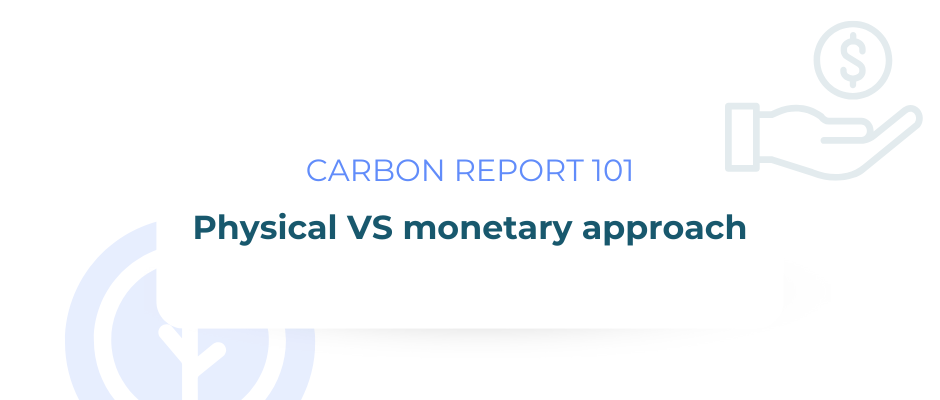
The difference between monetary and physical approaches in carbon reporting
To understand how much an activity emits, you must multiply an activity data with an emission factor. Emission factors (EF) can be physical, referring to physical measurement units (e.g. litres, kilos, kilowatts, etc.), or monetary.
A monetary EF is an emission factor associating GHG emissions with monetary values (e.g., per euro or dollar spent). For instance, a monetary EF might indicate that spending €1,000 in a given sector generates an average of 100 kg of CO₂e.
The limitations of the monetary approach in carbon reports
Choosing the right emission factors is critical for accurate results when conducting a carbon report. While monetary ratios can be convenient, they should only be used as a last resort, as they introduce significant inaccuracies compared to physical data. According to officially recognised methodologies, such as the Bilan Carbone® methodology, prioritising physical data is fundamental.
Monetary ratios are inconsistent because the price of a service or product isn’t proportionate to its carbon footprint but to other economic factors, such as the current demand for a product or service on the market or the cost of labour in a specific country. For example, a product produced in Poland might cost less than one made in France because of differences in the price of life, but it might emit more because the Polish energy grid is more fossil fuel-reliant than the French one.
When should you use monetary emission factors?
Using monetary ratios may be unavoidable in some instances, such as:
- When physical data is unavailable or difficult to collect (e.g., subcontractor activities).
- Assigning precise emission factors is complex for diverse goods or services (e.g., consulting or intellectual services).
However, monetary ratios should only be used as a last resort and must be documented to ensure accurate results.
Optimise your climate strategy

Tapio is a carbon management software that allows companies and consultants to calculate and reduce carbon emissions.